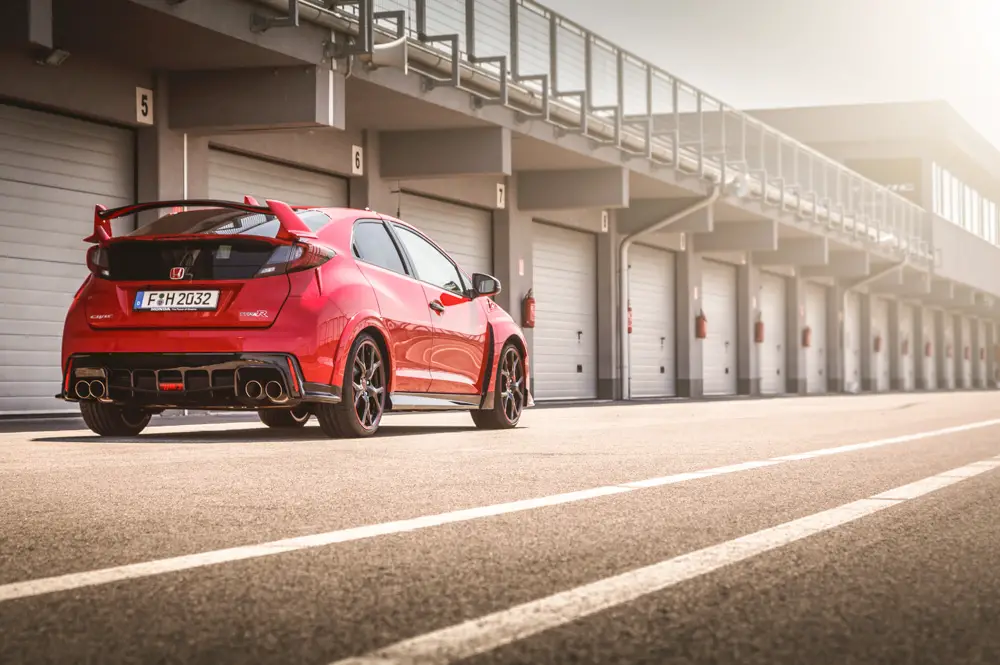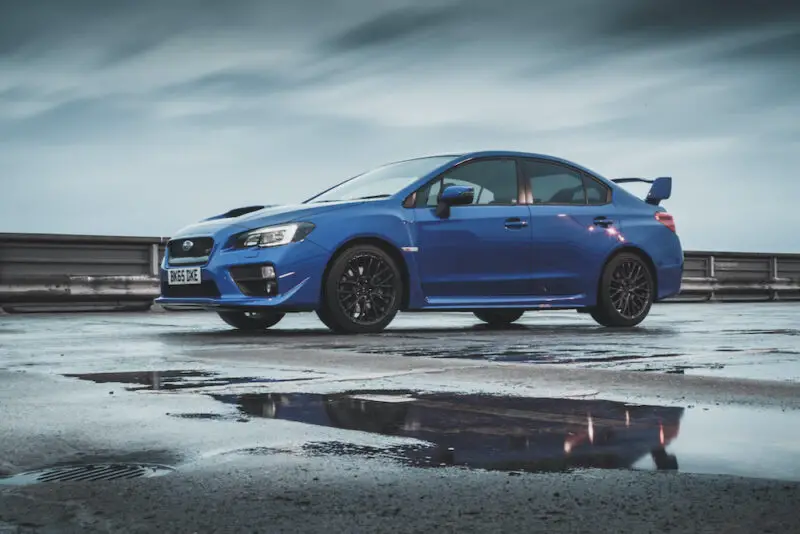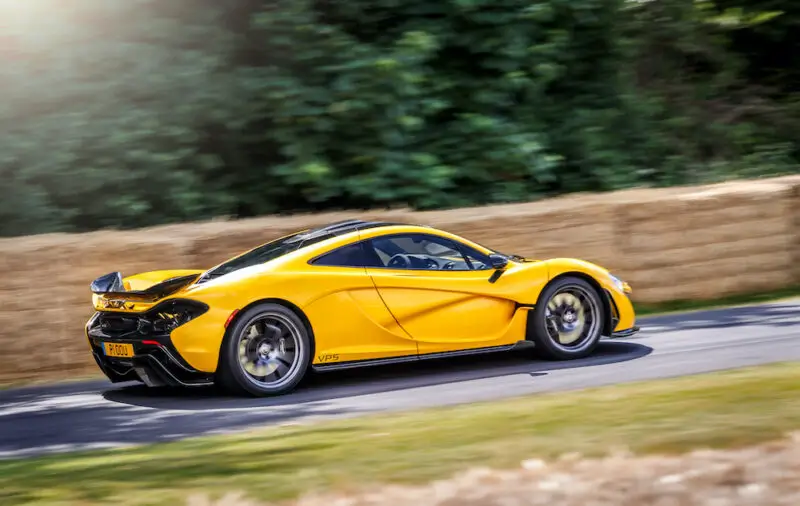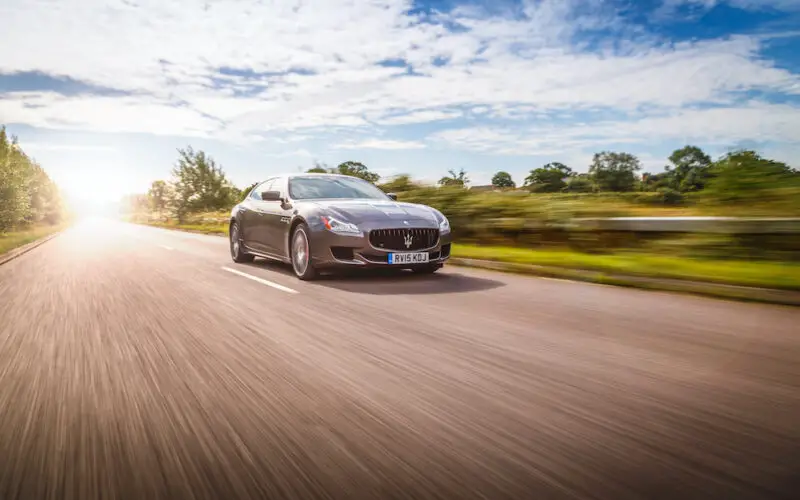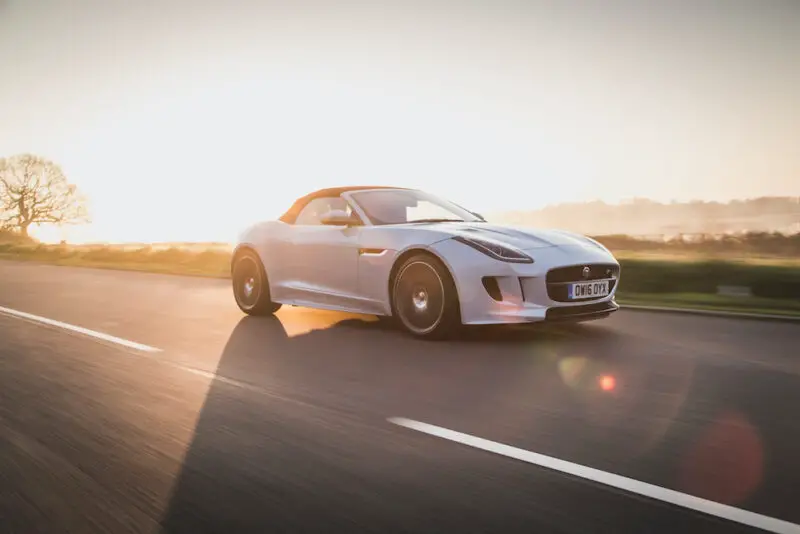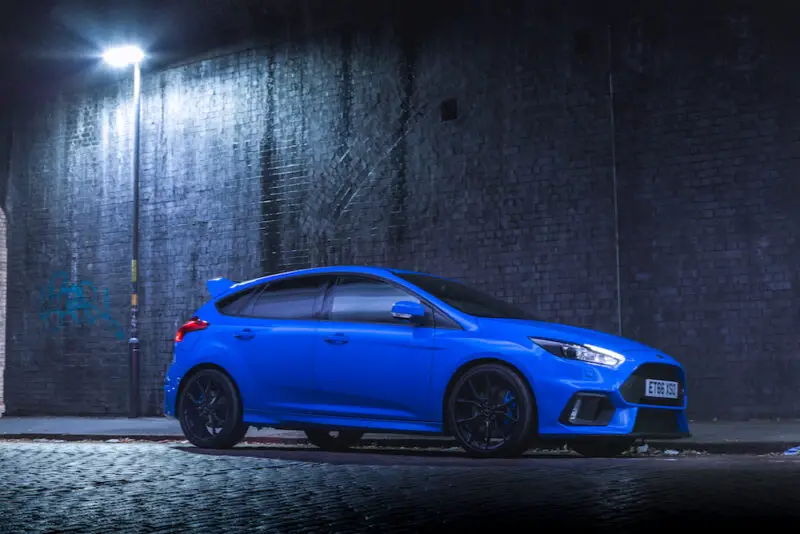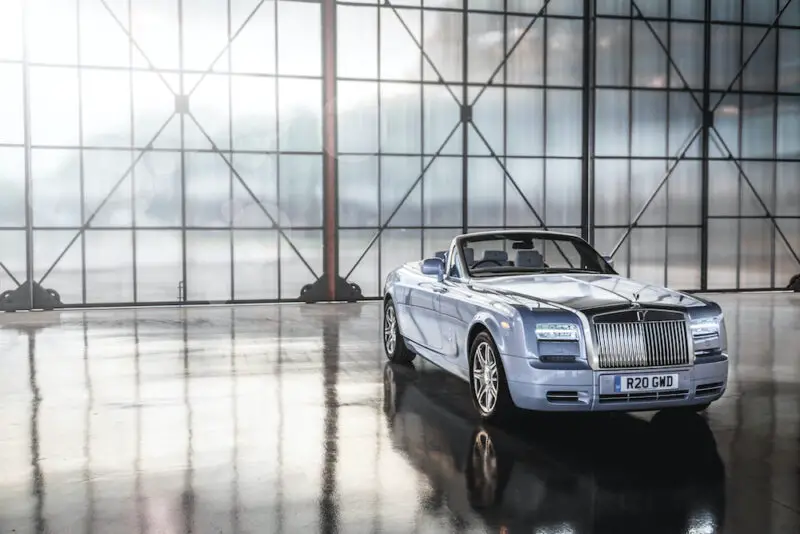In essence, photographing cars is akin to photographing people. Just like a person, every car has a different aesthetic, different character, and a different story. In order to capture the soul of a car, you have to approach and understand it thoroughly. This article aims to provide you with enough car photography tips to help you capture the essence of every car you shoot.
There is a multitude of things you need to think about when photographing cars, starting from the story, and set, and ending with light and camera settings.
There are more than 1.4 billion cars in the world. Or around 1 vehicle per 5 people. All these vehicles are slightly different from each other in one way or another. It is your job to capture that.
- Get To Know Cars And The Audience
- Technical Car Photography Tips
- Camera Settings For Car Photography
- Safety In Car Photography
Get To Know Cars, And Your Audience To Improve Your Car Photography
Before you grab your camera to shoot cars, you need to understand cars. Maybe even more importantly, you need to understand the audience interested in cars. At the end of the day, your audience for the end result matters a lot.
What Is There To Understand About Cars?
For many people, especially the audience you will be shooting for, cars are more than just a transportation method. For them, cars are art pieces, a fashion statement, adrenaline machines, and a way of life. You need to understand that there is a giant car culture with a variety of subcultures.
To begin grasping car cultures, you need to understand cars. That big chunk of metal, plastic, and sometimes carbon fiber is a complex piece of engineering with a certain aesthetic to it. Cars can range from sports and race cars to general convenience vehicles.
You need to understand the basics, at least. It will be tough to present a Porsche properly if you don’t differentiate a Targa from a regular convertible. At the end of the day, you will need to know that a Porsche 911 Carrera has a rear engine set up, while a Lamborghini Huracan is a mid-engine car.
Moreover, you will need to understand important features or upgrades between models. Things like bigger ceramic brakes on the sport version instead of the standard in the base model or upgraded aero.
What Is Car Culture?
Same as photographers, petrolheads are a weird and specific bunch in a positive manner. There are people that are obsessed with muscle cars and straight-line speed, while on the other hand, there are people obsessed with agility and nimbleness over raw power.
That is the difference between the American and the Japanese market. The American car culture is obsessed with big and chunky cars with huge engines that are great in a straight line. The JDM (Japanese Domestic Market), on the other hand, is mostly obsessed with agility and nimbleness with cars that do great on Touge tracks. Touge is a Japanese word for a narrow mountain road.
The European market and culture are in the middle between US and JDM markets, but with added luxury. If you find yourself riding in a top-of-the-line Audi, it will feel like a luxury yacht that can glue you to the seat while barely producing any noise.
Make no mistake, you will find a community and culture for pretty much anything. For example, the Bosozoku car culture stems from bike gangs dating from the 1950s. Today mainly, Bosozoku cars are with exaggerated features, colorful and loud. Pretty much a fashion statement.
Some cars start communities and cultures. The DMC Delorean or the Toyota Supra MK4 are prime examples of cars that start their own culture, albeit very different ones.
The moral of the story is that you need to understand the culture that the specific car and owner belong to and shoot for that.
If you shoot a drift car in a scenario more suited for a luxury car, it won’t appeal to the culture that the audience belongs to. Shoot the same drift car while it attacks a corner sideways with the cloud of rubber behind it, and it will fit right in.
Get To Know Your Audience And Your Client Base
Once you start understanding cars and different car cultures, you will inevitably start understanding your audience. Be it regular people shopping for a general commuter vehicle, or the die-hard petrolheads obsessed with certain car cultures, you will have to cater the photos to the audience.
On the other hand, you have clients that can range from those petrolheads that want awesome shots from their unique car build or large corporations like car manufacturers or car shows like SEMA that want brand visibility and audience engagement.
In any case, you will have to manage both and create photos that will showcase the vehicle in the best light possible while engaging the audience and fulfilling the brand visibility necessary for the client.
Technical Car Photography Tips
No matter the audience or the culture you shoot for, there are important technical aspects that you need to master. These will separate you and your photos from the rest of the crowd. If you follow these aspects correctly, your photos won’t look like an average snapshot.
These aspects are important, and you should be aware of them at all times.
Always Have All The Lights On
Car lights are a part of the design. Most modern cars employ LED designs in the head and tail lights that are unique to the brand or model.
In a way, that is the first thing that differentiates one brand and model from another.
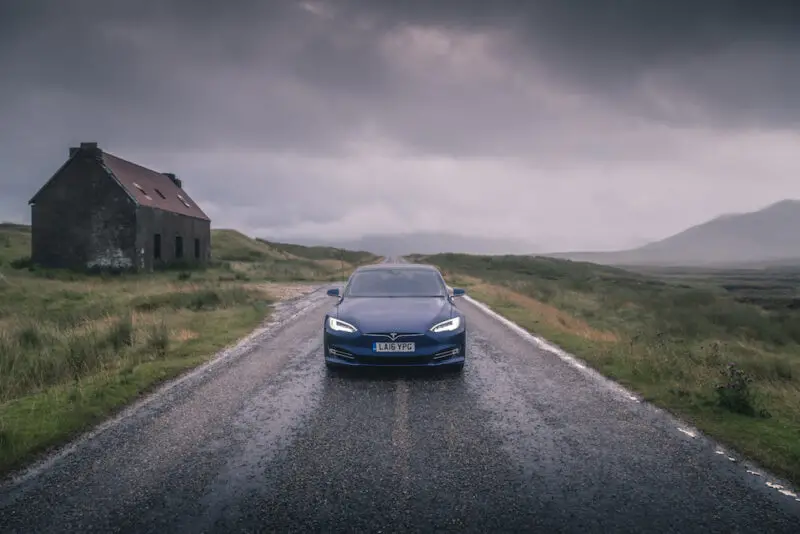
That said, when photographing a car, it is very important to have all the lights on. The only lights that should be off are the high beams and the hazards.
Even in the daytime, make sure that the lights are on. You might need to adjust the camera settings to capture them as well, but it will end up being a better photo.
Turn The Front Wheels For Better Rim Angle
If you shoot the car from the diagonal, you won’t have a good angle of the wheels. Specifically, you won’t see the rims well.
Since the rims are a design piece as well, showcasing them is always a good idea. Therefore, if you shoot the car from a diagonal, turn the front wheels towards you so you can see the rims better.
Make Sure You Have Detail Shots
Details matter. They make the cars unique. If you fail to capture them, you are missing out on important content.
This is especially true for premium or limited models. Mercedes AMG, Nissan GT-R Nismo, BMW M series, Audi RS, and so forth are all badging indicative of the fastest and most premium models each brand offers.
Those badges and the upgrades associated with them should find themselves in the details you shoot.
Don’t forget about the details that are obvious, like rims, grille, headlights, tail lights, vents, brakes, specific lines in the body, brand badges, dashboard, infotainment system, steering wheel, materials, etc.
Make Sure That You Have Shots Of Anything Special
Some cars shoot flames, others have active aero. Rolls-Royce’s have unique interior lighting, with a lot of quirks and features, including a star roof. Tesla Model Y has falcon doors that look quite cool.
Many mid-engine Italian supercars have see-through engine covers so you can see the magnificent engines they use.
Just like the details, these should find their way into the photos you shoot.
Manage Reflections Properly
Depending on the car and the paint, you might want to minimize or maximize reflections.
Reflections can hide body lines, make windows less transparent, or even change the paint color.
So for car photography, circular polarizer filters are a must. Otherwise, you will have a lot more work to do and certain shots that you won’t be able to make.
With CPL filters you can control the reflections, especially from glass and metal. In essence, this allows you to use more angles and worry less about pesky reflections covering important details.
They are especially helpful if you shoot the interior through a window or the windscreen.
Use Motion To Emphasize Speed And Movement
Cars are designed to move. Some can move faster than others. Car photography often needs to emphasize that motion and add a bit of dynamics to the photo.
You can achieve the motion in your picture by either making panning shots or doing shots from a follow car.
How To Do Panning Shots?
You can find panning shots in motorsports often. Photographers who shoot motorsports often rely on this technique to convey motion and speed with the race cars they photograph.
That said, it doesn’t mean that you can’t use the same outside of motorsport photography.
To do a proper panning shot, you will need a lens that is longer than 50mm, a bit of a steady hand, and patience.
The trick is to use a slower shutter speed and track the movement of the car while snapping photos. If your camera pan matches the car movement perfectly, you will have the car tack sharp in the photo, while the background has lots of motion blur.
You can use shutter speeds slower than 1/100th of a second, but how low you go depends on how fast the car moves and how long the lens is. With a longer lens, say 200mm, you can get away with 1/100th of a second.
But with a 50mm lens and a car that is not zooming by at 100mph, you’ll probably need a shutter speed that is in the 1/20th of a second ball park.
The good thing is that you can practice this technique with any moving object. Random traffic, buses, trains, birds in flight, etc. It does not take ages to master once you get the hang of it, you will be able to pull off panning shots with fairly decent success. Bear in mind, having 1 out of 20 shots perfect is considered great.
It is important to understand that most of the time panning doesn’t work for shots that are not two-dimensional. In other words, you can pan a moving car by tracking the side of the car. If the car is moving towards you, there is nothing you can do.
How To Photograph From A Follow Car?
As you have realized by now, you will get motion blur with longer shutter speeds. With a follow car, you can get shots that you can’t get with panning.
The concept is simple, the car you want to photograph is followed by a car that you sit in. You match speeds, and you photograph the car from the window, trunk, roof opening, etc., using slower shutter speeds.
Of course, the following car can be in front of the car you want to photograph.
Here you can use whatever lens you see fit, however, wide-angle lenses tend to work a bit better due to the wider field of view and thus being easier to stabilize. Lenses with image stabilization paired with cameras that have IBIS will work even better.
If you are a good drone pilot, you can shoot these photos with a drone too.
Make sure that you are safe during this type of photography. 60kph, or 35mph, is more than enough to capture motion. So, there is no need for crazy and unsafe speeds. Make sure that you are always secured in the following car by the seat belt or by safety ropes tied to a hard point in the car (usually the seat belt bolt).
No photo is worth risking your life for. Be safe.
Pay Attention And Emphasize The Brand
Often you will be hired by a company or a brand to shoot a car for them. Whether it is a car dealership or a car brand marketing department, they will want brand visibility. That means anything that promotes the car brand that hired you should be emphasized as much as possible.
Be it specific features that are unique to that brand or the obvious and subtle badging, you need to pay attention and have that in the photos as well. Sometimes the brand will be the point of interest in the photo, and other times you will need to sneak it in so it has a presence.
Lens Choice For Car Photography
Sadly when it comes to car photography, there is not a formula that you can easily follow. When it comes to lenses, you will be using a couple of different ones for different purposes.
Shooting Stationary Cars
If the car is stationary and you want to show off the body lines properly, you should avoid wide-angle lenses. They will force you to get near the car, and with that, you will get a lot of perspective exaggeration. For cases like this, staying between 50mm and 200mm is preferable. Which focal length you use will depend on the car.
For smaller cars, you can get away with 50mm to 100mm, but for average cars, you will probably stay within 85-200mm. That is why you see most car photographers utilizing a 70-200mm lens.
Shooting Cars In Motion
For cars in motion, when you are in a follow car, you will be going a bit on the wider end, staying between 24mm and 50mm. Focal lengths longer than that aren’t impossible, but it is harder to manage with all that motion.
If you have a steady hand and you are shooting on a smooth road with little to no bumps, you can go for a longer focal length. A 24-70mm lens with image stabilization is the safest bet.
For panning, the opposite is true. You should be aiming for telephoto lenses with stabilization because stabilized lenses will help you get a smoother pan. Especially lenses that have different stabilization modes. Almost all of the lenses with selectable stabilization modes allow you to select only vertical stabilization. These lenses are the best choice for panning.
When shooting details, you will need a lens that can focus to closer distances. Something like a 100mm macro is preferable, but any lens that can close focus would do just fine. Sigma Art lenses often can focus to around 30cm, which is great as a workaround. Just avoid wide-angle lenses for this since a bit of bokeh is nice here.
Camera Settings For Car Photography
Depending on the style of shooting, you will be using different settings for your camera. There are no universal settings that will always work. However, there are concepts you should follow and choose the settings accordingly.
For Still Shots
When you are photographing the whole car diagonally, you should have as much of the car in focus as possible. It will be hard to get the whole car in focus without focus stacking, but using a hyperfocal distance calculation will help you a bunch.
In cases like this, you should not focus on the closest point, instead, focus somewhere around one-third in. For example, if you close down the lens to around f/11 and focus somewhere around the windshield, you will have the whole front of the car, the windshield, and up to the back tire in focus.
Cars In Motion
For panning, you can use any aperture you want since you will be photographing the side of the car most of the time, and being a relatively 2D photo aperture plays a small role here. In this case, as previously mentioned, the shutter speed is key.
When you are shooting in a follow car, you want to close down the aperture to at least f/5.6 to be able to have a bit more in focus. If it is a bright day, f/8 would be preferable. This will increase the number of shots you will keep because it will reduce the out-of-focus shots.
Additionally, you will have the whole car in focus because of the distance to the subject.
Details
Detail shots require apertures that will have the details as much in focus as possible. Sometimes it is okay to have a part of the detail slightly fall off into blur, but not most of it. If you have three of the four rings of the Audi emblem in focus and the fourth slightly blurry, but the logo is still recognizable, that is acceptable.
Set And Scene Car Photography Tips
Once you get the hang of car culture and the technical aspects of car photography, you’ll have to think about the aesthetic aspects. In other words, you’ll have to start thinking about the set, color palette, location, and so forth.
Right Time Of The Day
From the get-go, the time of the day is probably one of the most important factors aesthetic-wise. Photographing a car in different parts of the day gives a different feeling to the viewer.
If you shoot on a bright sunny day, you are often conveying general purposeness. In other words, you are conveying a simple car that is easy to use, and it is a reliable one. An all-in-one package.
Shooting during sunrise or sunset often conveys dynamics, something new, and something that is not that often seen. The crack of dawn (even though it might be sunset) often symbolizes progress and the creation of something groundbreaking.
Night-time car photography, on the other hand, symbolizes timelessness and mysticism. It is often used to emphasize rare cars, vintage cars, and cars that go well with nightlife.
Have The Car In Its Natural Environment For Better Car Photography
It is very important to have the car belong in the environment you shoot. If you try to photograph a BMW M3 trying to climb a rocky trail, that will end up really bad. Put a Ford Bronco in that environment, and you are in for some cool shots.
Put the car in the environment it was designed for, and you will get a more complete image. That being said, you can always experiment but be within the bounds of reality. Koenigsegg just released a commercial of one of their hypercars racing around a snow-covered track.
Koenigsegg is known for pushing the boundaries, so they can allow themselves to do that. If Ford did that with the Ford GT, it would look weird and out of place.
When possible, have the car interact with the environment. If the Ford Bronco actually climbs the rocky trail instead of the trail just being the background will prove to be a much better photo.
Or, if you have a McLaren Senna on a racetrack, it would be a better shot if you have it shot during a hard corner, wheels spinning and everything, instead of it standing still in the pit lane.
Be Aware Of The Color Of The Car
The color palette of your shot will be dominated by the color of the car you shoot. Be aware of that. Make sure that the color of the car works well within the palette created by the environment.
Since it is always a bad idea to change the color of the car, especially if you shoot for a car brand, you’ll have to manage the colors in the rest of the image.
In other words, the location where you shoot the car has to have colors that work with the color of the car. Or the location being neutral so the color of the car can dominate the color palette.
Safety In Car Photography
Cars are pretty safe if you shoot them parked in a location or studio, however, a big part of shooting cars in motion and locations with traffic. You need to be aware of that.
If you shoot at a street, make sure that you shoot away from traffic, busy streets are out of the question. Don’t be that guy that clogs traffic for a photo. Everyone has somewhere to be. At the end of the day, it is illegal in most countries.
Being Safe When Shooting Cars In Motion
When shooting cars in motion, have that shoot organized on a road that has little to no traffic. Additionally, have people who can regulate traffic between the two points where you shoot. For this, you will probably need a permit from the city or a governing body.
Moreover, when shooting cars in motion with a follow car, make sure that you are safely strapped in the follow car and that your camera is permanently attached to you so it can’t fall off.
Both drivers in the following car and the car that is being photographed should keep a safe distance and be in communication at all times. Avoid sudden accelerations and decelerations at all costs. No risky maneuvers. Abide by all laws on the road.
Being Safe When Shooting Indoor Car Photography
If you are shooting in a studio, garage, or underground parking garage without open and effective ventilation systems, keep the engine of the car off. If you need the engine running for a shot, turn it on, take the shot, and turn it off. Avoid turning it on for at least 10-15 minutes, so the exhaust gases have time to dissipate.
Open the windows and doors of the studio or garage if you need the engine running, so the exhaust gases can escape out. Carbon monoxide poisoning is no joke. If the smell of exhaust gases does not go away, leave the area immediately. This means that the area does not vent properly, and you are breathing in all those exhaust gases instead of clean air.
